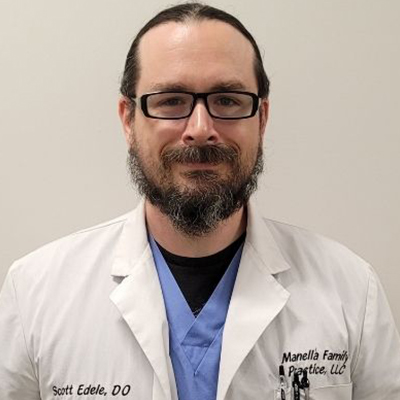
With the new year upon us, many of us use this time to reflect on what we can do in the upcoming year to better ourselves, both physically and mentally. Making a “New Year’s Resolution” is something that I have found myself doing on many occasions, and I am sure like many, I have been unsuccessful at maintaining my resolution most years. I am not sure if it is the task of sticking with something that I am not particularly fond of, or if it is the thought of having to remind myself to do something different for the next 365 days and beyond. However, like clock-work, around February/March, my resolution has fallen through, and I am back to square one. As a result, I have broken down three of the most common resolutions in order to try to make them easier to understand and follow. I am hoping that for you, and for myself, this makes it easier to stick to the resolution throughout the year and beyond (hint: #2 is my resolution/downfall).
1. Losing Weight
One of the most commonly-asked questions I get as a physician is, “How do I lose weight?”. I wish there was an easy answer. There are many factors that can contribute to weight loss, including diet, activity, and genetics, among other things. One of the main factors I see in a lot of my patients, though, is dietary intake. According to the Dietary Guidelines for Americans released by the USDA, 74% of Americans fall into the category of overweight or obese. A healthy diet should be made up of nutrient-dense foods and drinks from all food groups, including the following:
- Vegetables – dark green, red and orange, beans, peas, lentils and starches
- Fruits – whole fruit
- Grains- at least half of which are whole grain
- Dairy – fat-free or low-fat milk, yogurt, and cheese, and/or lactose-free versions and fortified soy drinks/yogurt as alternatives
- Proteins – lean meats, poultry, eggs, seafood, beans, peas, lentils, nuts, seeds, and soy
- Oils – vegetable oils and oils in food
Also, foods should be eaten in appropriate portions and caloric intake should be maintained or limited. Recommended calorie intake varies per person based on age, gender, and activity. Click here to check out a chart located on the USDA website where you can find your recommended daily caloric intake. The USDA recommends using the 85:15 guide when making decisions about caloric intake. This means that 85% of food intake should be nutrient dense from the above-mentioned groups, and 15% should be from other food groups, such as saturated fats and sugars. Alcohol intake should be limited as well. The USDA recommends two or less drinks a day for men, and one or less for women. When it comes to calories and weight, less is better. Also, medical conditions, such as diabetes and hypertension, should also be considered when making dietary changes (such as decreasing sodium and carbohydrate intake because of conditions). All of these factors should be taken into consideration when modifying diet for weight loss in the new year.
2. Exercising
In addition to a balanced diet, maintaining an exercise routine is a new year’s resolution that many people make each year. Many patients ask me what kind of exercise they should do and how long they should do it for each session. There are no specific exercises I tell my patients to do because it is all a personal choice based on needs.
According to the Physical Activity Guidelines for Americans released by the Department of Health and Human Services, the average adult should get between 150-300 minutes of moderate-intensity aerobic activity and two days of muscle strengthening activity each week. This can be broken down into any form of exercise if it meets the recommended amount of time per week. One form of exercise I like to do that accomplishes both is circuit training. Circuit Training is where you cycle through a set number of exercises in a short period of time in order to get both muscle-strengthening and moderate-intensity aerobic activity. You repeat this cycle of exercises a set number of times with short periods of rest in between cycles in order to keep your heart rate up. Depending on your medical and physical conditions, you may not be able to do this specific kind of workout routine, however, any activity is better than none. Exercise has been shown to have immediate benefits on anxiety, blood pressure, and sleep quality. It also has long term benefits for cancer prevention, fall prevention in older adults, cognition, and for management of chronic health conditions, such as osteoarthritis, hypertension, and diabetes.
One last point about exercise – do something you enjoy. One of the biggest complaints about exercise I get from my patients (and from myself) is that it can be boring and repetitive. As a result, a lot of people fall off the wagon after some time due to this. Switch it up and keep it interesting. Try taking exercise classes at a local gym or recreation center or take some dance classes or something that will keep you interested and motivated. This will likely keep you on track in the upcoming year and beyond.
3. Getting Better Sleep
Have you ever woken up in the morning exhausted, even after sleeping for the full night? I have, on many occasions, and I am sure a lot of you have as well. A huge issue I see as a physician is people not being able to sleep, whether it is falling asleep or staying asleep. In an age where almost everyone is using an electronic device daily, sleep quality has become an increasing issue. Sleep is restorative. When you sleep, your body has time to heal and recover. Less sleep means less restoration, so as a result, poor sleep patterns can also contribute to other conditions, such as high blood pressure, obesity, and diabetes.
According to the CDC, the average adult needs at least seven hours of sleep a night or more – which for many is a struggle. Sleep hygiene, or habits that we have around the time we are trying to go to bed, can be extremely impactful on our sleep quality. Having a consistent sleep schedule is an important factor that plays a role in sleep quality. You should go to bed at the same time each night and wake up the same time each morning (regardless of weekday or weekend) in order to get the best quality sleep. Maintaining a good sleep environment is also important. Your bedroom should be dark and quiet and temperature should be comfortable. Also, electronic devices should be avoided at least one hour prior to sleep and removed from the bedroom. The blue light emitted from electronic devices disturbs the circadian rhythm (wake/sleep cycle), making it more difficult to fall and stay asleep. I tell my patients to make sure they turn on the blue light filter on their phones or devices in order to help. However, limiting electronic devices around bedtime is usually more effective long-term. Also, people should avoid eating large meals or drinking alcohol close to bedtime as digestion can affect sleep quality as well. Going back to resolution #2, exercise and activity usually helps sleep in a positive way. People who exercise regularly tend to get more quality sleep. So, if you are not exercising and not sleeping well, give that a shot and see if it helps.
If you try all of these things and still wake up exhausted, you may need a sleep study to evaluate medical reasons for poor sleep, such as sleep apnea. If you do get diagnosed with sleep apnea, there are medical devices that can be used to help increase the quality of sleep each night, which in turn, can help other medical conditions as well over time.
A New Year’s resolution can be a daunting task. However, I hope with the information I have provided, it may be a little easier to understand from a medical standpoint and easier to maintain in the upcoming year. Whether it is weight loss, exercise, better sleep, or any other resolution you may make for the upcoming year, here is wishing you all the best! Happy New Year!

Dr. Scott Edele is a proud member of the TopLine MD Alliance at the Manella Family Practice of Pembroke Pines.
The TopLine MD Alliance is an association of independent physicians and medical practice groups who are committed to providing a higher standard of healthcare services. The members of the TopLine MD Alliance have no legal or financial relationship with one another. The TopLine MD Alliance brand has no formal corporate, financial or legal ties to any of the affiliated physicians or practice groups.



